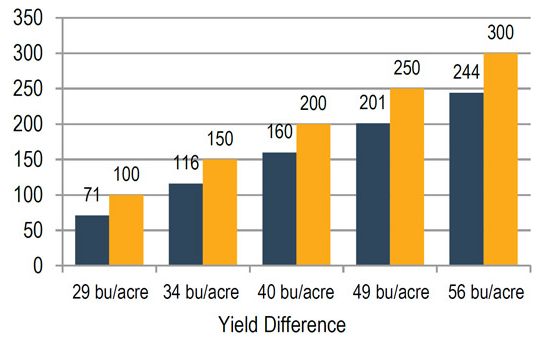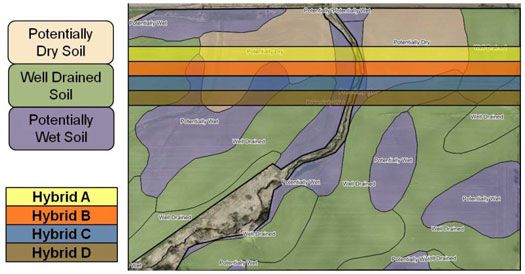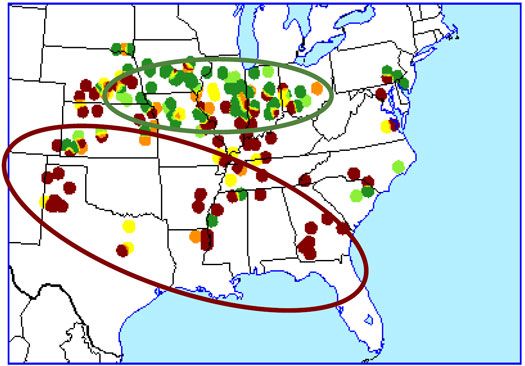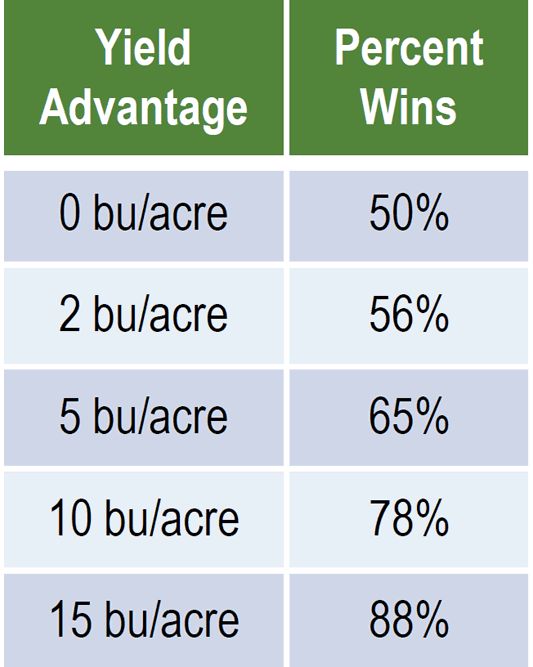Multiple Environments are Critically Important

Figure 1. Yield difference needed to be significant (0.05 probability) in a single environment.
Causes of Single-Location Variability
GPS-based planters, yield monitors, and analysis tools can make field variation useful in the testing process.

Figure 2. Hybrid strip trial layout in which the trial runs across multiple management zones assigned based on soil moisture characteristics.
For split-planter trials evaluating agronomic practices:

Figure 3. Agronomic trial with 2 variables, seeding rate and foliar fungicide treatment, that includes a non-treated check.
LSD is the minimum yield difference needed between two hybrids or agronomic practices to ensure there is a real difference as opposed to a yield difference due to chance alone.

Figure 4. The least significant difference (LSD) is strongly influenced by the number of locations used to compare 2 hybrids or agronomic practices.
Reasons to Consider Multiple Locations

Figure 5. Yield difference map for 2 hybrids in which 1 hybrid generally performed better in the central Corn Belt (green dots) while the other performed better in the southern U.S. and western Corn Belt (red dots). Some variability in performance was also observed within these 2 regions.


Distribution of yield advantage (std dev = 13)
The foregoing is provided for informational use only. Please contact your Pioneer sales professional for information and suggestions specific to your operation. Product performance is variable and depends on many factors such as moisture and heat stress, soil type, management practices and environmental stress as well as disease and pest pressures. Individual results may vary.